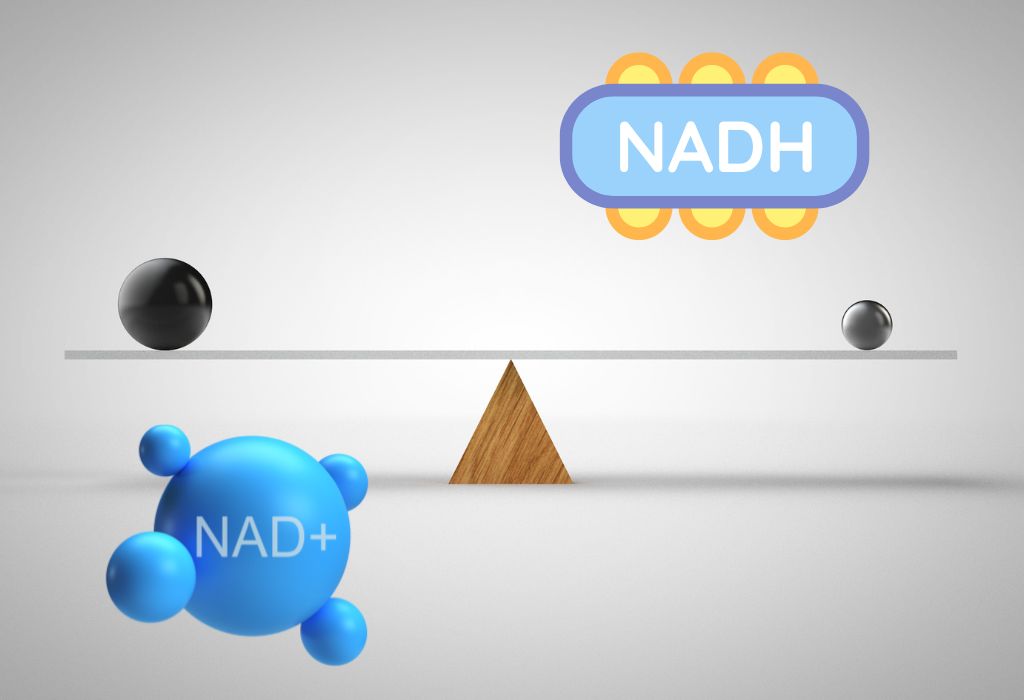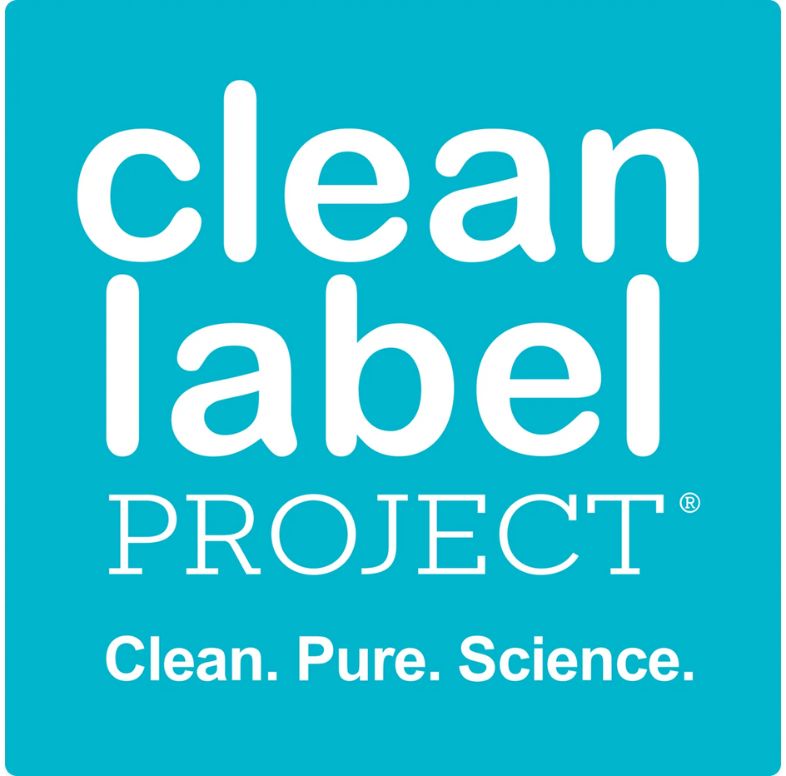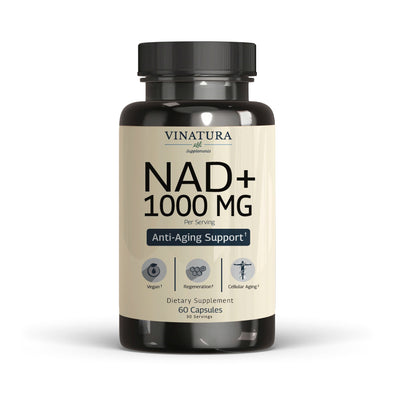
NAD+ Vs NADH: Similarities and Differences
NAD+ and NADH are crucial coenzymes that play a vital role in the metabolic processes of all living cells. Although they are often mentioned together, these molecules have distinct functions and characteristics.
Understanding the differences between NAD+ and NADH can help you appreciate their importance in energy production, cellular health, and overall well-being.
Before exploring further, please read the disclaimer located at the end of this webpage.
Key Takeaways
- NAD+ and NADH are two forms of nicotinamide adenine dinucleotide, a molecule that plays a crucial role in cellular metabolism.
- NAD+ is an oxidized form, while NADH is its reduced form, each having different roles in energy production and metabolic processes.
- The balance between NAD+ and NADH, known as the NAD+/NADH ratio, is vital for maintaining cellular health and metabolic function.
Are NAD+ and NADH the Same?
No, NAD+ and NADH are not the same, although they are closely related. NAD+ is the oxidized form of the molecule, while NADH is the reduced form. This difference is significant because it determines their specific roles in cellular processes.
While NAD+ primarily functions in oxidation-reduction reactions, acting as an electron acceptor, NADH donates electrons in these reactions, thereby participating in different metabolic pathways.
What is NAD+?
NAD+, or nicotinamide adenine dinucleotide, is a coenzyme present in all living cells. This molecule is crucial for several metabolic processes that produce energy within the body.
Key Points About NAD+:- NAD+ is an essential part of oxidation-reduction (redox) reactions.
- It acts as an electron acceptor in these reactions.
- The primary role of NAD+ is to help convert nutrients into energy.
How Does NAD+ Work?
NAD+ works by transferring electrons from one molecule to another. Here’s a simplified breakdown:
Electron Acceptance
In its oxidized form, NAD+ accepts electrons from molecules involved in metabolism. This process is like receiving a charge in a battery.
Energy Conversion
Once NAD+ has accepted electrons, it becomes NADH. This electron transfer is fundamental for cellular respiration, the process by which cells produce ATP (adenosine triphosphate), the main energy currency of the cell.
Why is NAD+ Important?
- Energy Production: NAD+ is vital for converting food into energy. It helps in breaking down carbohydrates, fats, and proteins, which release the energy stored in these nutrients.
- Cellular Repair and Longevity: Research shows that NAD+ levels decrease as we age, which may affect cellular repair and longevity. Studies have highlighted that maintaining NAD+ levels can promote healthy aging.

- Metabolic Health: High NAD+ levels are associated with improved metabolic health. According to a study published in Cell Metabolism, boosting NAD+ levels can enhance metabolic functions.
Read more: 11 NAD+ Supplement Benefits and Side Effects for Health
What is NADH?
NADH is the reduced form of NAD+, which means it carries additional electrons. This molecule is crucial for cellular energy production, serving as an energy carrier within the cell.
Key Points About NADH:
- NADH is generated from NAD+ during metabolic processes such as glycolysis and the citric acid cycle.
- It carries electrons that have been harvested from nutrients and donate them to the electron transport chain.
- This donation of electrons is essential for the production of ATP, the main energy currency of the cell.
How Does NADH Work?
NADH works by participating in the electron transport chain (ETC), a critical component of cellular respiration found in the mitochondria. Here’s a breakdown of its function:
Electron Carrier
NADH carries electrons that are released from the breakdown of nutrients, such as glucose, fats, and proteins. It transports these electrons to the ETC, which is a series of protein complexes located in the inner mitochondrial membrane.
Donation to the ETC
When NADH donates its electrons to the first complex of the ETC, it initiates a chain reaction. This process releases energy that pumps protons across the mitochondrial membrane, creating a gradient.
ATP Production
The proton gradient created by the electron flow through the ETC drives the synthesis of ATP by ATP synthase. This process, known as oxidative phosphorylation, is the primary way cells produce ATP. Essentially, NADH serves as a link between the breakdown of nutrients and the energy production machinery of the cell.
Why is NADH Important?
- Energy Production: NADH is essential for ATP synthesis. By donating electrons to the ETC, NADH helps drive the production of ATP. This ATP is then used by the cell to perform various functions, including muscle contraction, nerve impulse propagation, and biosynthesis.

- Metabolic Efficiency: The efficiency of NADH in producing ATP makes it a vital molecule for energy metabolism. A single NADH molecule can result in the production of approximately 2.5 molecules of ATP [1].
- Role in Aging and Disease: NADH levels can affect cellular health and have been linked to aging and various diseases. Maintaining NADH levels can support mitochondrial function, improve energy metabolism, and potentially delay age-related decline.
- Antioxidant Properties: NADH also plays a role in protecting cells from oxidative stress. It participates in the regeneration of antioxidants like glutathione, which helps neutralize harmful free radicals and prevent cellular damage (Journal of Clinical Investigation).
What is the NAD+/NADH Ratio?
The NAD+/NADH ratio represents the balance between the oxidized form (NAD+) and the reduced form (NADH) of nicotinamide adenine dinucleotide within the cell. This ratio is a critical indicator of cellular health and metabolic function.
Why is the NAD+/NADH Ratio Important?
- Cellular Homeostasis: The NAD+/NADH ratio helps maintain cellular homeostasis, the balance of various physiological processes within the cell. This balance is essential for cells to function properly and respond to changes in their environment.
- Metabolic Flexibility: A high NAD+/NADH ratio supports oxidative metabolism, the process by which cells use oxygen to convert nutrients into energy. This is crucial for metabolic flexibility, allowing cells to efficiently switch between different energy sources, such as glucose and fats, depending on availability and demand [2].
- Longevity and Health: Research suggests that a higher NAD+/NADH ratio is associated with longevity and metabolic health. Increasing NAD+ levels can enhance mitochondrial function, improve metabolic processes, and potentially slow down aging.
- Oxidative Stress and Disorders: Conversely, a lower NAD+/NADH ratio can indicate increased oxidative stress or the presence of metabolic disorders. Low NAD+ levels can impair cellular functions, reduce the efficiency of energy production, and increase vulnerability to oxidative damage.
How is the NAD+/NADH Ratio Regulated?
The ratio of NAD+ to NADH is influenced by several factors, including:
- Diet and Nutrition: Foods rich in niacin (vitamin B3) can help maintain NAD+ levels, as niacin is a precursor for NAD+ synthesis.
- Exercise: Physical activity has been shown to increase the NAD+/NADH ratio, enhancing mitochondrial function and promoting overall metabolic health.
- Aging: As we age, NAD+ levels naturally decline, which can lead to a lower NAD+/NADH ratio. This decrease is associated with reduced mitochondrial function.
- Supplementation: Recent studies have explored the use of supplements like NAD+ precursors like NMN, NR, e.g ., to boost NAD+ levels and improve the NAD+/NADH ratio. These supplements have shown promise in enhancing metabolic health and promoting longevity [3].
Learn more: 5 NAD+ Precursors: Where Can You Find Them?
What are the Differences Between NAD+ and NADH?
Although NAD+ and NADH are two forms of the same molecule, they play different roles in cellular metabolism and function. Understanding these differences is crucial for appreciating how cells produce energy and maintain health.
Key Differences Between NAD+ and NADH
Oxidized vs. Reduced Forms
- NAD+ is the oxidized form of the molecule. It accepts electrons during metabolic reactions, making it an electron acceptor.
- NADH is the reduced form. It carries electrons that have been harvested from nutrients and donate them in other biochemical reactions. This distinction is vital for understanding their roles in energy production and biosynthesis.
Role in Metabolism
- NAD+ is primarily involved in catabolic reactions, where it functions as an electron acceptor. During these reactions, NAD+ is reduced to NADH. This process is essential for the breakdown of nutrients like glucose, fats, and proteins to produce energy [4].
- NADH, on the other hand, is mainly involved in anabolic reactions. It donates electrons, playing a crucial role in biosynthetic processes and cellular respiration. NADH transfers the electrons it carries to the electron transport chain in the mitochondria, leading to the production of ATP, the energy currency of the cell.
Energy Production
- NADH is directly involved in ATP synthesis. By donating electrons to the electron transport chain, NADH generates a proton gradient across the mitochondrial membrane, driving ATP production. This makes NADH essential for energy production in cells (Journal of Clinical Investigation).
- NAD+, while not directly involved in ATP synthesis, is crucial for cellular repair and metabolism. It participates in several key metabolic pathways, including glycolysis, the citric acid cycle, and fatty acid oxidation. Moreover, NAD+ is involved in the activation of sirtuins, proteins that regulate cellular health and longevity [5].
Health and Longevity
- NAD+ levels are associated with cellular repair, metabolism, and longevity. Higher levels of NAD+ are linked to enhanced DNA repair, and improved mitochondrial function. This makes NAD+ a crucial molecule for maintaining cellular health.
- NADH, while also important for energy production and overall cellular function, does not have the same direct impact on longevity and cellular repair as NAD+. Its primary role is in supporting energy production through its involvement in the electron transport chain.
NAD+ vs. NADH: Which is Better?
The question of which is better—NAD+ or NADH—is not straightforward because their importance varies depending on the context of their functions within the cell.
Energy Production: The Role of NADH
- ATP Synthesis: NADH is vital for energy production. It directly participates in the electron transport chain, which is the primary pathway for ATP synthesis in the mitochondria. By donating electrons to this chain, NADH helps generate a proton gradient across the mitochondrial membrane, which ultimately drives the production of ATP, the main energy currency of the cell.
- Efficiency of Cellular Respiration: Without adequate NADH, the efficiency of cellular respiration is significantly compromised. This would lead to a reduction in ATP production, affecting the energy levels and overall functionality of cells, particularly in energy-demanding tissues like muscles and the brain.
Cellular Health and Longevity: The Importance of NAD+
- Metabolic Regulation: NAD+ plays a crucial role in metabolic regulation. It is involved in redox reactions that are essential for metabolizing glucose, fatty acids, and amino acids. By accepting electrons during these metabolic processes, NAD+ helps convert nutrients into usable cellular energy.
- DNA Repair and Cellular Repair Mechanisms: NAD+ is also crucial for DNA repair and maintaining genomic stability. It activates enzymes such as sirtuins and PARPs (poly ADP-ribose polymerases), which are involved in DNA repair and cellular stress responses. This activity is linked to improved cellular function and increased lifespan in various organisms.
- Longevity and Anti-Aging Effects: Research has shown that boosting NAD+ levels can enhance mitochondrial function, reduce oxidative stress, and support overall cellular health. This is particularly important in the context of aging, where a decline in NAD+ levels is associated with reduced cellular function.
The Balance Between NAD+ and NADH: A Key to Optimal Health
Balancing Act: Both NAD+ and NADH are essential for different but complementary functions. NADH is necessary for ATP production, which powers cellular activities, while NAD+ supports cellular repair, metabolism, and longevity.
Maintaining Optimal Ratios: A healthy balance between NAD+ and NADH is crucial for optimal cellular function. An imbalance can lead to metabolic disturbances, increased oxidative stress, or reduced cellular efficiency. For instance, an excess of NADH relative to NAD+ can indicate a state of hypoxia or metabolic dysfunction, while too much NAD+ compared to NADH could impair ATP production.
Context-Dependent Needs: The "better" molecule depends on the specific context:
- For high energy demands, such as intense exercise or cognitive tasks, NADH is crucial for sustaining ATP levels.
- For long-term cellular health and repair, especially in the context of aging, NAD+ is more beneficial.
Conclusion
NAD+ and NADH are indispensable molecules in cellular metabolism, each playing distinct yet interconnected roles in energy production and cellular health. Understanding their differences and how they work can provide insight into maintaining a healthy balance for optimal cellular function. Whether considering supplements or focusing on natural ways to boost NAD+ levels, it's essential to appreciate the unique contributions of both NAD+ and NADH to overall health and well-being.
Related Articles:
- Are NAD Supplements Safe? 9 NAD+ Benefits You May Not Know
- Best Time To Take NAD+ Supplement: Morning Or Night?
- NAD vs NAC: Differences & How to Take Them Together?
References
- [1] Zhang, Kuo, et al. “Is Anti-Hepatitis c Virus Antibody Level an Appropriate Marker to Preclude the Need for Supplemental Testing?” Intervirology, vol. 58, no. 5, 1 Jan. 2015, pp. 310–317, pubmed.ncbi.nlm.nih.gov/26785210/, https://doi.org/10.1159/000441474. Accessed 25 Aug. 2024.
- [2] Morgan-Bathke, Maria, et al. “Sex and Depot Differences in Ex Vivo Adipose Tissue Fatty Acid Storage and Glycerol-3-Phosphate Acyltransferase Activity.” AJP Endocrinology and Metabolism, vol. 308, no. 9, 1 May 2015, pp. E830–E846, pubmed.ncbi.nlm.nih.gov/25738782/, https://doi.org/10.1152/ajpendo.00424.2014. Accessed 25 Aug. 2024.
- [3] Nguyen, Dan, et al. “Deterministic Direct Aperture Optimization Using Multiphase Piecewise Constant Segmentation.” Medical Physics, vol. 44, no. 11, 22 Sept. 2017, pp. 5596–5609, pubmed.ncbi.nlm.nih.gov/28834556/, https://doi.org/10.1002/mp.12529. Accessed 25 Aug. 2024.
- [4] Sorvillo, Frank, et al. “Public Health Implications of Cysticercosis Acquired in the United States.” Emerging Infectious Diseases, vol. 17, no. 1, 1 Jan. 2011, pp. 1–6, pubmed.ncbi.nlm.nih.gov/21192847/, https://doi.org/10.3201/eid1701.101210. Accessed 25 Aug. 2024.
- [5] Barba-Spaeth, Giovanna, et al. “Structural Basis of Potent Zika–Dengue Virus Antibody Cross-Neutralization.” Nature, vol. 536, no. 7614, 23 June 2016, pp. 48–53, www.nature.com/articles/nature18938, https://doi.org/10.1038/nature18938. Accessed 25 Aug. 2024.
Author

Product Disclaimer
Including an ingredient or study does not evaluate, endorse, or recommend any Vinatura product or any third-party product. Some ingredients discussed may not be used in any Vinatura product.
The content of the articles has not been evaluated by the Food and Drug Administration (FDA) and is not intended to promote or endorse any specific product. Any products sold on this website are not intended to diagnose, treat, cure, or prevent any disease.
Opinions and Endorsements
Any claims, statements, or opinions expressed in the articles are those of the author(s) and do not necessarily reflect the views or opinions of the manufacturers of the dietary supplement products. The products sold on this website are separate from the content of the articles and are not directly endorsed or associated with the information presented here.
Liability Disclaimer
The author(s) of the articles, website, and manufacturers of the dietary supplement products do not assume any liability for any potential consequences arising from the use of the information provided in the articles. Ingredient effects, dosages, and safety vary by individual, formulation, and context; some ingredients interact with medications or may be unsuitable during pregnancy or lactation. It is recommended that individuals consult with a qualified healthcare professional before making any dietary or lifestyle changes, including the use of dietary supplements.
Product Usage
Please refer to the product labels and packaging for specific usage instructions and guidelines for the dietary supplement products sold on this website.
Customer Support
For any concerns or questions regarding the dietary supplement products, please contact our customer support team, who will be more than happy to assist you.






Leave a Comment
Be the first to comment.
What do you think?